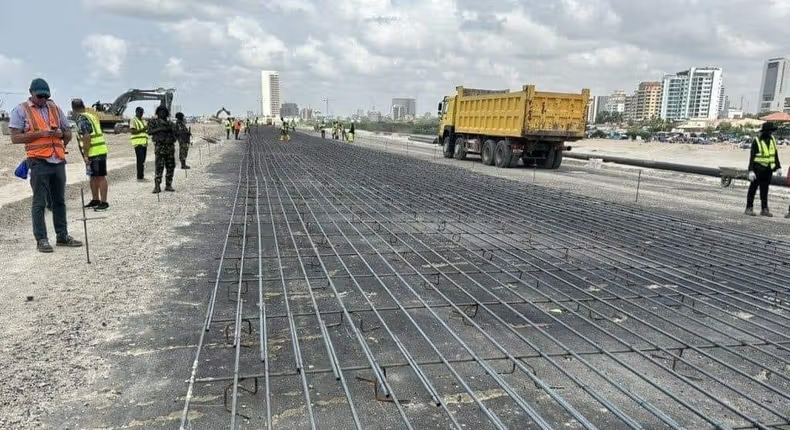Umahi says the first 47km of the project would be open to the public by May next year.
The Federal Government says the Lagos-Calabar Coastal Highway project has been rerouted to avoid possible damage to telecommunication companies’ subsea cables.The government also disclosed that the road project has been reduced from 10 lanes to six to save cost.
David Umahi, the Minister of Works made this known on Tuesday, June 11, 2024, at a meeting with contractors in Abuja.
According to the minister, the government has disbursed a total sum of ₦10bn to Nigerians whose properties were demolished for the construction of the 700km road project.
Umahi further disclosed that the first 47km of the project would be open to the public by May next year.
The minister, however, dismissed the claim that the project has been stopped, adding that four kilometres of concrete road have been completed already.
He said, “For the three legacy projects by the administration, the Lagos-Calabar coastal highway, we have cut down the project size to six lanes, especially from sections two, three, and four, it shows you that we mean business. Some people have been writing that we have stopped the project. No project is stopped. As we are talking now, over four kilometres of concrete road has been completed on six lanes.
“We had to establish a new path due to complaints made by MTN on its subsea cable and Okuaja community, we had to reroute not to the new alignment, not to the gazetted alignment but far away from the two, and we came back to a new alignment at kilometre 25. So the work is going and it’s moving smoothly. We have paid the total compensation of close to N10bn. we are not owing and the contractor is highly commended for a very beautiful job, commitment and being very reasonable.
“These projects are investments, and they have inherent returns on investments, By May 29, 2025, we will have completed section one of the Lagos-Calabar coastal highway.”
Umahi who described the project as an investment explained that when the road is tolled, it would yield a return on cost within 10 years.
